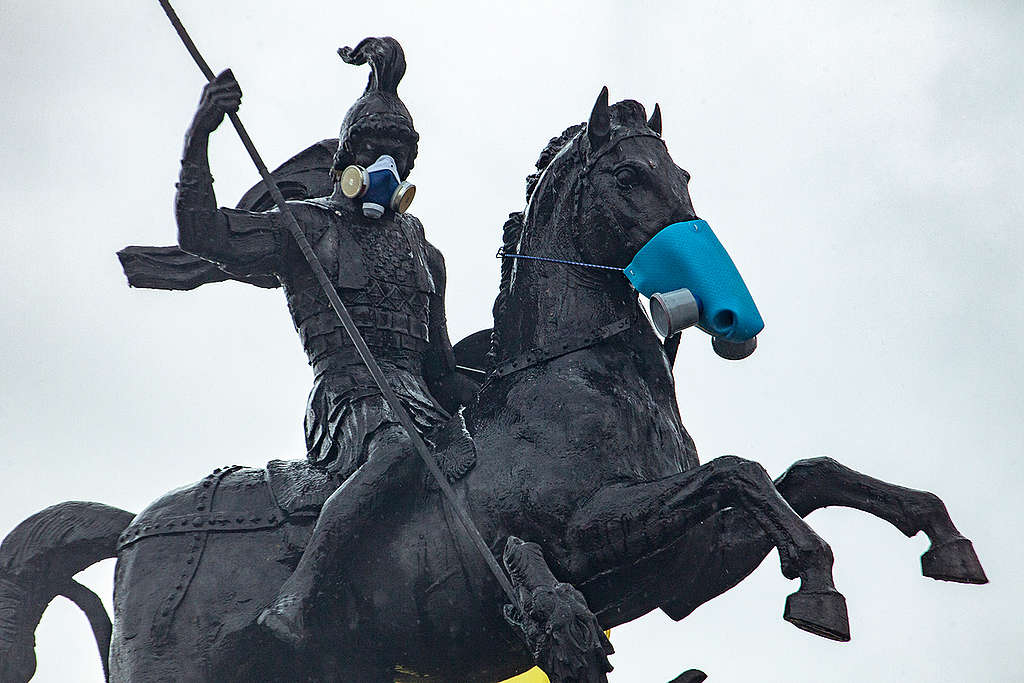Last year, as the World Cup took place in cities all across Russia, it was impossible to ignore the serious problem air pollution was creating in its largest cities. In response, Greenpeace Russia wanted to find out what residents thought about air pollution, and how the authorities can help solve the problem.

A respirator on the statue of St. George in the heart of the capital of Russia.
Research commissioned by Greenpeace Russia found that air pollution has long been a widespread concern; 82% of Moscow’s residents are dissatisfied with the quality of the air they’re breathing, and in St. Petersburg, the second largest city, it’s 77%.
People are well aware of the main cause of the problem, too — the same research showed that more than 80% of respondents in Moscow and St. Petersburg are aware that emissions from fossil-fuelled vehicles are the primary source of harmful air.
The good news is government officials are beginning to recognise that their biggest cities must start transitioning to green mobility — and now we see not only promises, but real actions.
The Human Rights Council under the President of Russia has proposed restrictions such as low emission zones for vehicles below the heavily polluting Euro-3 emissions standard. This is a step in the right direction in an effort to tackle air pollution in Moscow and other major cities. The Russian government has already instructed the authorities of Moscow and St. Petersburg to develop a road map for the implementation of these measures.
This is a real breakthrough, and couldn’t have happened without the hard work and support of thousands of you. In autumn 2017, Greenpeace Russia handed over a revolutionary scenario for the development of the transport system of the capital to the Government of Moscow — one of its most important components was the introduction of low emission zones.
Under this plan, air pollution from nitrogen dioxide and carbon dioxide emissions from vehicles will be reduced by a quarter. Such restrictions have already been introduced in dozens of European cities — including megacities such as London — and this has led to a significant improvement in air quality.
However, for any restrictions to be effective, there also needs to be significant development in alternative forms of mobility — including public transport and bicycle infrastructure. We are hoping that Moscow and St. Petersburg will set an example in solving this problem for other cities in Russia and beyond. There are already more than 200 cities in Europe with such zones, including Berlin, Brussels, Rotterdam and Copenhagen.
After all, the changes that we manage to achieve in Russia with the support of tens of thousands of you are only a small part of the work that Greenpeace is doing. Together, we are making mobility green in megacities around the world. Will you join us?
Konstantin Fomin is the media coordinator for Greenpeace Russia
